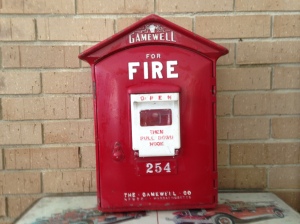Deborah Sampson is the only known female soldier of the Revolutionary War. Disguised as a man, she served the country well on the battlefield, suffering the same hardships and battles of her fellow troops and maintaining her male identity throughout.
She was born in 1760 in Plympton, Pennsylvania. Her father was a seaman who didn't come back from the sea, leaving her mother destitute with several kids to raise. She was forced to give her children up to other families to raise, and then she died just a year after her husband.
Deborah was in two different families before entering the home of Deacon Benjamin G. Gannett, a farmer. As an indentured servant, she had to work for the family until she was eighteen. After leaving the family, she taught school for a while. She evidently caught the eye of a wealthy young man who proposed marriage, but she had other plans.
The Revolutionary War had been raging for several years already. She was young, healthy, tall and wanted to have an adventure. She made herself a man's suit of clothing and ventured out in her disguise. When she had no problems with the charade, she enlisted in the 4th Massachusetts Regiment, using the first and middle names of her deceased brother, Robert Shurtleff. She was off to War.
Like all soldiers in a war zone, her life was not easy, but she persevered and became a seasoned soldier. She almost drowned once when they were crossing the Croton River, suffered a severe head wound in one skirmish, and took two pistol balls in the thigh. She protested to her fellow soldiers that she did not want to be taken to the hospital, but they ignored her wishes. At the hospital the head wound was treated and she managed to leave before they began work on her leg. She used a penknife and managed to get one of the balls out of the thigh, but the other was too deep for her to reach.
She was assigned to be a waiter in the service of General Paterson. She fell very ill with a severe fever and lost consciousness. She was sent to the hospital where the doctor was shocked to find she was a female, wearing a cloth to bind her breasts. She was sure she would be immediately discharged. However, the doctor kept her secret, transferring her to his home where she was under the care of the doctor's wife.
When she was able to return to her duties, the doctor gave her a note to take to her superior. Knowing it must be a letter revealing her secret she was prepared to be sent home. Instead it was a letter recommending her to be given an honorable discharge. This was done in 783.
Back home in Massachusetts she met and married a farmer by the name of Benjamin G. Gannett. The worked hard but lived in poverty as they raised their three children.
At some point her service in the War as a male soldier became known. In 1792 she petitioned the Massachusetts State Legislature for monies available to veterans. Her petition was denied because she was a woman. She provided letters verifying her service and she finally received 34 pounds plus interest dating back to date of discharge.
Still needing money in 1802, she went out on a lecture tour, the first woman to do so in the United States. Speaking to audiences composed of both and women, she would extol the value of a woman pursing her womanly duties to the best of their ability. She would then leave the stage, change into her Army uniform, and come back to talk about her military experiences. She did this for a year, but barely made enough to cover her expenses. More than once, Paul Revere would give her money to help her out.
In 1805, and with the help of Paul Revere, she again petitioned the Massachusetts State Legislature for a military pension given to men who had served in the Revolutionary War. After some debate she was awarded $4 a month for her service.
She died at the age of 66 in 1827. After her death, her widower petitioned for pay as a spouse of a soldier. Though they were not married at the time of her service, the committee concluded that the history of the Revolution "furnished no other similar example of female heroism, fidelity and courage." He received the pension.










